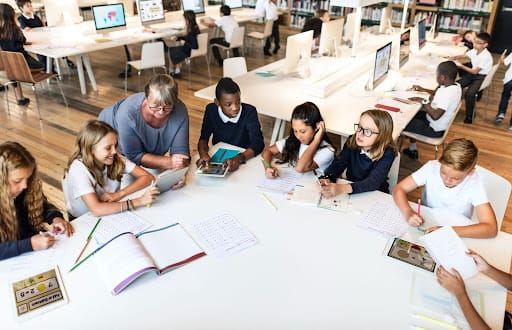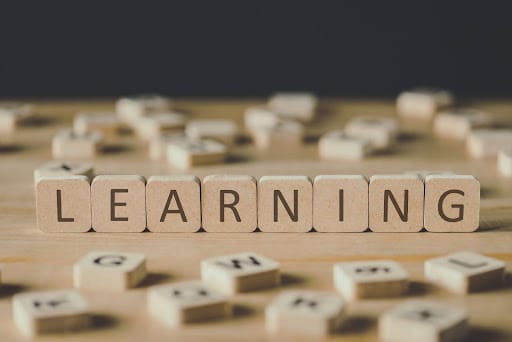Mixed Reality in Education: How It Enhances Learning Experiences
Technology is changing education, and mixed reality in education is playing a big role. Mixed reality (MR) combines virtual and augmented reality to create interactive learning environments. It helps students understand complex subjects in a more engaging way.
Mixed reality for education allows students to learn at their own pace. Teachers can track progress and provide customized lessons based on each student’s needs. This makes education more effective and accessible.
As technology advances, mixed reality in education will become more common. It has the potential to transform classrooms, making learning more engaging, interactive, and practical.

Mixed Reality (MR) is one such latest advancement that can redefine learning and training. With its ability to overlay digital elements in the physical world and allow users to interact with digital objects in real-time. From interactive 3D models in classrooms to virtual skill-building exercises for professionals, MR aids in elevating learning experiences.
Latest Information : Latest Mixed Reality Campaigns
Understanding Mixed Reality in Education
Mixed Reality (MR) in education combines Augmented Reality (AR) and Virtual Reality (VR) to create interactive, immersive environments where learners can engage with digital content in their real-world settings.
For instance, students studying biology can interact with a 3D hologram of the human heart, rotating and dissecting it to understand its structure. Even medical trainees can use MR stimulations to practice real-world instances like surgeries and medical diagnosis.
Mixed Reality bridges the gap between theoretical knowledge and practical application, making learning more effective and memorable.
Benefits of Mixed Reality in Learning
Mixed reality for students makes learning more interactive. Instead of just reading textbooks, students can explore 3D models, conduct virtual experiments, and even take virtual field trips. This hands-on approach improves comprehension and memory retention.
Here are a few benefits of utilizing Mixed Reality in the education sector.

Enhanced Engagement: Mixed Reality turns passive learning into an interactive experience, keeping students and trainees actively involved.
Improved Retention: Interactive visuals and stimulations help learners retain complex concepts better.
Personalized Learning: MR experiences can adapt to individual learning speeds and styles, offering tailored content.
Safe Practice Environments: MR provides a risk-free way to practice skills, from medical surgeries to piloting aircraft.
Accessibility: With MR devices becoming more affordable, education powered by MR is reaching broader audiences, including remote learners.
How is Mixed Reality Transforming Educational Methods?
Mixed Reality (MR), is a transformative tool that can be utilized to enhance educational methods. This can help in better understanding, impactful teaching and also for better recall of the complex concepts.
K-12 Education
Mixed Reality introduces interactive learning experiences in subjects like science, history, and geography. Students can explore ancient civilizations through virtual tours or conduct experiments in virtual labs.
Higher Education
The educational institutions/universities are using MR to enhance learning in specialized fields like medicine, engineering, and architecture. Students can engage with realistic simulations, making complex topics easier to grasp.
Professional Training
Mixed Reality is revolutionizing corporate and industrial training by offering realistic stimulations of the real-world scenarios. This is especially useful for industries like aviation, healthcare, and manufacturing.
Mixed Reality for Modern Education
Mixed Reality is a promising tool for modern education that can aid students and make learning engaging and fun.
Many institutions are now adopting mixed reality for schools to enhance STEM learning. Science students can explore the human body in 3D, while engineering students can design and test prototypes in a virtual space. This prepares them for real-world careers.
Easy and Accessible: Accessible to a broader audience, including underprivileged schools. Students / Trainers can learn through MR experience just by scanning a QR code.
AI-Driven Personalization: MR platforms use AI to adapt learning content to individual needs, creating truly personalized educational experiences.
Collaborative Learning Environments: Students from different parts of the world can come together in shared MR spaces to collaborate on projects and learn from each other.
Integration with Smart Classrooms: MR will complement other digital tools, creating a seamless blend of traditional and modern teaching methods.
Lifelong Learning: MR will expand beyond schools and universities, supporting skill development and professional growth for learners of all ages.
Flam’s Mixed Reality Innovations for Education
Flam, a pioneer in mixed reality advertising and content, is expanding its expertise into education by creating immersive and interactive MR solutions. Institutions/ Universities can collaborate with Flam’s technologies to adapt MR through Card, Alpha, Interactive, and Multi Interactive, to enhance learning experiences:
Card: Flam’s MR advertising technology for print can be adapted to education. For example, textbooks integrated with Flam’s Card technology could bring static diagrams to life with interactive MR models.
Alpha: High-quality, immersive MR environments allow students to visualize and interact with content in lifelike settings, enhancing understanding.
Interactive: Flam’s touch-based interactions can enable students to manipulate virtual objects, such as dissecting a cell or assembling an engine.
Multi Interactive: Multi-path learning journeys let students explore content in a personalized manner, ensuring a deeper understanding.
Flam’s technology empowers educators to create engaging, impactful lessons while making learning accessible and memorable for students of all ages.
Final Thoughts
Mixed reality is revolutionizing education by transforming how students and professionals engage with learning content. Its ability to create immersive, interactive, and personalized experiences ensures that learners not only understand concepts but also retain them for longer.
With Flam’s innovative MR solutions, education is no longer confined to classrooms. Flam’s Card, Alpha, Interactive, and Multi Interactive technologies demonstrate the potential of MR to make learning more accessible and impactful.
As MR technology continues to evolve, it will play a crucial role in shaping the future of education, making it more inclusive, engaging, and effective. Whether you’re a school administrator, a corporate trainer, or a tech enthusiast, embracing MR in education is an investment in the future.